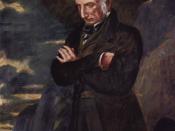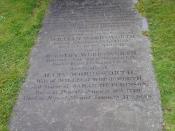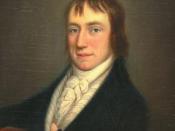In the poem "The Prelude" by William Wordsworth, the speaker talks about an experience in the woods. He finds a boat, paddles out, but turns back when he sees a rock looming over him. The speaker uses devices such as diction, imagery, and tone to convey a sense of pleasure at the beginning and one of fear towards the end.
Diction plays an important role in conveying the senses of pleasure in the beginning and fear towards the end. Some phrases with a positive connotation used to describe a pleasurable experience in the first part of the poem are "glittering", "proud", and "lustily". These words all suggest that the experience of the speaker is going well, at least up to this point. This changes later in the poem, however, as the speaker begins to convey a growing sense of fear and anxiety when he spies the grim figure.
Some instances of diction that support this are "grim", "trembling", and "grave". The speaker's path was challenged and he fled in fear. These phrases with negative connotations all support the idea that he was afraid.
The imagery in both parts of the poem is also congruent with the flow of pleasure and hope in the beginning, but fear and depression in the end. One image that represents the hopeful first portion is the willow tree. It symbolizes shelter and security, as well as the starting point of the journey. The clearest image representing the speaker in fear is the "grim shape" that blocks out the sky. This "shape" caused him to turn back from his journey and thus supports the fact that he is in fear.
The tone of the poem changes along with the diction and imagery in a parallel manner. It is positive and hopeful...


